Today Current Affairs: 3rd January 2022 for UPSC IAS exams, State PSC exams, SSC CGL, State SSC, RRB, Railways, Banking Exam & IBPS, etc
Table of Contents
Sankalp Smarak:
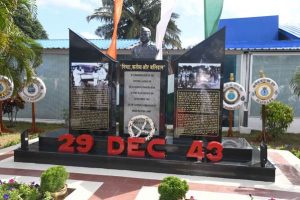
In order to preserve this important event in history, a Sankalp Smarak was dedicated to the nation by Lt Gen Ajai Singh, Commander-in-Chief Andaman and Nicobar Command (CINCAN), exactly 78 years after Netaji’s arrival on 29 Dec 2021.
- The Smarak is a tribute not only to the resolve of the soldiers of the Indian National Army but also reminds us of the values enshrined by Netaji himself, “Nishtha, Kartavya aur Balidan” or “Commitment, Duty and Sacrifice” that continue to underscore the ethos of the Indian Armed Forces.
- On 30 December 1943, a national flag was hoisted for the first time on Indian soil, at Port Blair.
- It is also significant is that Netaji escaped British surveillance from Kolkata on 16 Jan 1941 and stepped back on Indian soil after nearly three years, at Port Blair Aerodrome on 29 Dec 1943 and unfurled a National flag the next day.
- Netaji’s visit to the islands as the Head of the Provisional Government of Azad Hind and Supreme Commander of Indian National Army marked a symbolic fulfilment of his promise that the Indian National Army would stand on Indian soil by the end of 1943.
- This historic visit also marked a declaration of Andaman and Nicobar Islands as the “first liberated territory of India”.
The Quantum Computing Laboratory By Indian Army:
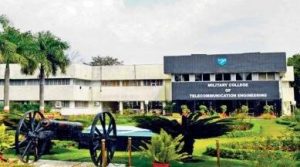
The Indian Army has set up a Quantum Computing Laboratory and a centre for Artificial Intelligence in Mhow, Madhya Pradesh.
- The Quantum Computing Laboratory has been established with the help of the National Security Council Secretariat (NSCS), to spearhead research and training in this key developing field.
- National Security Council is a three-tiered organization that oversees political, economic, energy and security issues of strategic concern.
- Indian Army has also established an Artificial Intelligence (AI) Centre at the same institution with over 140 deployments in forward areas and active support of industry and academia.
- Training on cyber warfare is being imparted through a state-of-the-art cyber range and cyber security labs.
- Objective:
- The two Centres will carry out extensive research in developing the transformative technologies for use by the armed forces.
- The Centres will also facilitate the research and training in the developing field of Quantum and artificial intelligence.
- It will help it facilitate the next generation of communication and transform the current system of cryptography to post-quantum cryptography.
- The key thrust areas of Quantum Technology are Quantum Key Distribution, quantum computing and quantum communication.
- QKD, also called Quantum Cryptography, is a mechanism to develop secure communication.
Consumer Protection Rules, 2021:

In exercise of provisions under the Consumer Protection Act, 2019, the Central Government has notified the Consumer Protection (Jurisdiction of the District Commission, the State Commission and the National Commission) Rules, 2021.
- The Act stipulates the pecuniary jurisdiction of each tier of consumer commission.
- The new rules revised pecuniary jurisdiction for entertaining consumer complaints.
- Earlier, the Centre had notified Consumer Protection (Direct Selling) Rules, 2021 for the direct selling industry.
Revised Pecuniary Jurisdiction:
- 50 lakh (earlier less than 1 crore) for District Commissions,
- More than Rs. 50 lakh to Rs. 2 Crore (earlier 1 crore to 10 crore) for State Commissions,
- More than Rs. 2 Crore (earlier more than 10 crore) for the National Commission.
About Consumer Protection Act, 2019:
- Product Liability: A manufacturer or product service provider or product seller will be held responsible to compensate for injury or damage caused by defective product or deficiency in services.
- Three-tier Quasi-judicial Mechanism: The Act promulgates a three-tier quasi-judicial mechanism for redressal of consumer disputes namely district commissions, state commissions and national commission.
- Time Bound Disposal of Complaint: The Act stipulates that every complaint shall be disposed of as expeditiously as possible and endeavour shall be made to decide the complaint within a period of 3 months from the date of receipt of notice by the opposite party.
- The complaint does not require analysis or testing of commodities and within 5 months if it requires analysis or testing of commodities.
- Filing Complaints Electronically: The Act also provides consumers the option of filing complaints electronically.
- To facilitate consumers in filing their complaint online, the Central Government has set up the E-Daakhil Portal.
- Mediation Route: The Act also includes reference of consumer disputes to Mediation, with the consent of both parties.
- This will not only save time and money of the parties involved in litigating the dispute, but will also aid in reducing overall pendency of cases.
New Constitution To Tackle A “Climate And Ecological Emergency: Chile
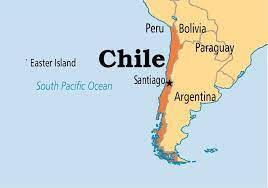
The South American country of Chile has formed a Constitution Convention to write a new constitution to tackle a “climate and ecological emergency.”
- As climate catastrophes become inevitable, countries that are already struggling with resource depletion (water, in Chile’s case) are being forced to take action by its people.
- Chilean politicians want to leverage its lithium to make the country richer. As Most Chileans disagree with the government’s approach, similar measures in the past (including privatisation of water) have done little to help out people who need these resources the most.
- Under the leadership of military ruler Augusto Pinochet (who overthrew communist Salvador Allende in a coup in 1980), Chile began its ongoing journey of resource exploitation.
- There’s a problem – lithium mining causes soil moisture to decline and causes daytime temperatures to increase which in turn makes the area drier. While more lithium may be extracted, it may become even more unfit for humans.
- The new constitution will focus on lithium mining and its regulation. In addition, it will foresee how lithium mining benefits indigenous communities.
- The architects of the new constitution will also assess whether Chile’s political system needs a revamp.
- Their work will not only shape how this country of 19 million is governed.
- It will also determine the future of a soft, lustrous metal — lithium — lurking in the salt waters beneath this vast desert beside the Andes Mountains.
- This reworking of the constitution is a reminder of changing priorities in a world moving towards climate catastrophes.
Global Cropland Expansion:
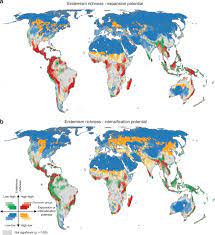
According to a new study, cropland area across the world increased 9% and cropland Net Primary Production (NPP) by 25% from 2003-2019.
- The growth was primarily due to agricultural expansion in Africa and South America.
Cropland Area:
- Cropland is defined as ‘land used for annual and perennial herbaceous crops for human consumption, forage (including hay) and biofuel’.
- Perennial woody crops, permanent pastures and shifting cultivation are excluded from the definition.
- Herbaceous energy crops are perennials that are harvested annually.
Cropland Net Primary Production
- Net Primary Production (NPP) is defined as the difference between the energy fixed by autotrophs and their respiration, and it is most commonly equated to increments in biomass per unit of land surface and time.
- An autotroph is an organism that can produce its own food using light, water, carbon dioxide, or other chemicals.
Respiration is a chemical reaction which occurs in all living cells, releasing energy from glucose.
Cropland Expansion:
- The largest cropland expansion was observed in Africa.
- In Africa, cropland expansion accelerated from 2004-2007 to 2016-2019, with a more than two-fold increase in annual expansion rates.
- The largest proportions of natural vegetation conversion to croplands (excluding dryland irrigation) were found in Africa, southeast Asia and South America.
- Global per capita cropland area decreased 10% during the period due to population growth but the per capita annual cropland NPP increased by 3.5% as a result of intensified agricultural land use.
- The agricultural expansion is often explained as a direct consequence of the global increase in food and energy requirements due to continuing population growth.
- The global population increased by 21% from 2003-2019.
Regional Comprehensive Economic Partnership (RCEP):
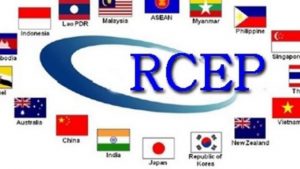
The RCEP will come into effect on January 1, 2022, marking the formation of the world’s largest free trade zone in terms of trade volume.
- RCEP is a trade deal between the 10-member Association of Southeast Asian Nations (ASEAN) and China, Japan, South Korea, Australia and New Zealand.
Aims and Objectives of RCEP:
- To lower tariffs, open up trade in services and promote investment to help emerging economies catch up with the rest of the world.
- To help reduce costs and time for companies by allowing them to export a product anywhere within the bloc without meeting separate requirements for each country.
- It also touches on intellectual property, but will not cover environmental protections and labour rights.
- RCEP will cover about 30% of global gross domestic product (GDP), worth $26.2 trillion (€23.17 trillion), and nearly a third of the world’s population, some 2.2 billion people.
- Under RCEP, around 90% of trade tariffs within the bloc will eventually be eliminated.
- RCEP will also set common rules around trade, intellectual property, e-commerce and competition.
India withdrew from the RCEP largely because of concerns it would open it up to Chinese goods amid an already wide trade imbalance with China, and the failure of the agreement to adequately open up to services.
Tiangong Space Station:
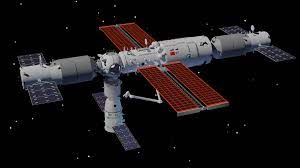
China, which is growing its presence in space, has complained to the UN detailing two alleged space incidents involving its Tiangong Space Station and two Starlink satellites from Elon Musk-founded aerospace firm, SpaceX.
- Both the U.S. and China are parties to the Outer Space Treaty, which is formally known as the ‘Treaty on Principles Governing the Activities of States in the Exploration and Use of Outer Space, including the Moon and Other Celestial Bodies’.
- The multilateral treaty, adopted by the UN General Assembly, provides the basic framework on international space law.
- According to article VI of the treaty, nations will be responsible for national space activities whether carried out by governmental or non-governmental entities.
- That means the U.S. can be held responsible for the activities of the U.S.-based aerospace firm SpaceX founded by Elon Musk.
- Article VII states that nations will be liable for damage caused by their space objects, such as satellites.
- Article V of the treaty requires parties to immediately inform other parties or the UN Secretary-General of any phenomenon they discover in outer space, “which could constitute a danger to the life or health of astronauts”.
- The United Nations Office for Outer Space Affairs was created to service the ad hoc Committee on the Peaceful Uses of Outer Space.
- The committee was established in 1958 shortly after the launch of the first artificial satellite, Sputnik-1.
- It has been serving as a focal point for international cooperation in the peaceful exploration and use of outer space.
The Outer Space Treaty:
- It came into force on October 10, 1967.
- The principles embodied in the treaty has facilitated the orderly conduct of activities in outer space.
Space-related conflicts have occurred in the past and will most likely continue to happen in the future as well, considering the growing number of activities in the space, involving different parties.
- The International Space Station and China’s space station, Tiangong, which is under construction, operate in the LEO, where much of the space debris can be found.
- Besides, there are about 30,000 satellites and other pieces of debris in Earth’s orbit that can reach speeds of nearly 29,000 km/h, raising the possibility of international incidents in the outer space.”
Armed Forces (Special Powers) Act (AFSPA):

Nagaland will continue to be a ‘disturbed area’ for another six months under the AFSPA as the condition of the state remained “dangerous,” a move which comes amid growing clamour for withdrawal of the special powers to the armed forces, especially after the death of 14 civilians earlier this month in a case of mistaken identity.
- The state has been under the controversial AFSPA since 1958.
- The Centre had recently decided to constitute a committee to study the possibility of withdrawing the Armed Forces (Special Powers) Act (AFSPA) from the State.
- The committee would submit its report within 45 days.
- The withdrawal of the “disturbed area” notification and the AFSPA from Nagaland will be based on the recommendations of the committee.
- In simple terms, AFSPA gives armed forces the power to maintain public order in “disturbed areas”.
- They have the authority to prohibit a gathering of five or more persons in an area, can use force or even open fire after giving due warning if they feel a person is in contravention of the law.
- If reasonable suspicion exists, the army can also arrest a person without a warrant; enter or search premises without a warrant; and ban the possession of firearms.
- Any person arrested or taken into custody may be handed over to the officer in charge of the nearest police station along with a report detailing the circumstances that led to the arrest.
- A disturbed area is one which is declared by notification under Section 3 of the AFSPA. An area can be disturbed due to differences or disputes between members of different religious, racial, language or regional groups or castes or communities.
- The Central Government, or the Governor of the State or administrator of the Union Territory can declare the whole or part of the State or Union Territory as a disturbed area.
Sahitya Akademi Award:
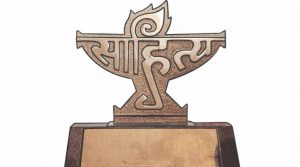
The Sahitya Akademi announced the Sahitya Akademi Award 2021 in 20 languages. The Akademi also announced Yuva Puraskar and Bal Sahitya Puraskar for 2021.
List Of Sahitya Akademi Awards 2021
- Anuradha Sarma Pujari (Assamese)
- Bratya Basu (Bengali)
- Mwdai Gahai (Bodo)
- Raj Rahi (Dogri)
- Namita Gokhale (English)
- Daya Prakash Sinha (Hindi)
- DS Nagabhushana (Kannada)
- Wali Mohd Aseer Kashtawari (Kashmiri)
- Sanjiv Verenkar (Konkani)
- George Onakkoor (Malayalam)
- Kiran Gurav (Marathi)
- Chhabilal Upadhyaya (Nepali)
- Hrushikesh Mallick (Odia)
- Khalid Hussain (Punjabi)
- Meethesh Nirmohi (Rajasthani)
- Vindeshwariprasad Mishr “Vinay” (Sanskrit)
- Niranjan Hansda (Santali)
- Arjun Chawla (Sindhi)
- Ambai (Tamil)
- Gorati Venkanna (Telugu)
Sahitya Akademi award established in 1954, is a literary honour that is conferred annually by Sahitya Akademi, India’s National Academy of letters.
- Akademi gives 24 awards annually to literary works in the languages it has recognized and an equal number of awards to literary translations from and into the languages of India.
- Besides the 22 languages enumerated in the Constitution of India, the Sahitya Akademi has recognised English and Rajasthani as languages in which its programme may be implemented.
- The Sahitya Akademi award is the second-highest literary honour by the Government of India, after the Jnanpith award.
Indian Pangolin:
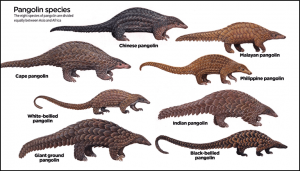
A radio-tagged Indian pangolin was released into the wild in Nandankanan Zoological Park (Odisha) following soft release protocols and provision for post-release monitoring.
- Radio-tagging involves attaching a transmitter to an animal to monitor its movements.
- Several wild animals — tigers, leopards and migratory birds — have been tagged over decades.
- Pangolins are scaly anteater mammals and they have large, protective keratin scales covering their skin.
- They are the only known mammals with this feature.
- It uses these scales as armour to defend itself against predators by rolling into a ball when threatened.
- Insectivore- Pangolins are nocturnal, and their diet consists of mainly ants and termites, which they capture using their long tongues.
- Out of the eight species of pangolin, the Indian Pangolin (Manis crassicaudata) and the Chinese Pangolin (Manis pentadactyla) are found in India.
- Indian Pangolin is a large anteater covered by 11-13 rows of scales on the back.
- A terminal scale is also present on the lower side of the tail of the Indian Pangolin, which is absent in the Chinese Pangolin.
- Indian Pangolin is widely distributed in India, except the arid region, high Himalayas and the North-East.
- The species is also found in Bangladesh, Pakistan, Nepal and Sri Lanka.
- Chinese Pangolin is found in the Himalayan foothills in Eastern Nepal, Bhutan, Northern India, North-East Bangladesh and through Southern China.
- Threats to Pangolins in India:
- Hunting and poaching for local consumptive use (e.g. as a protein source and traditional medicine) and international trade for its meat and scales in East and South East Asian countries, particularly China and Vietnam.
- They are believed to be the world’s most trafficked mammal.
- Conservation Status:
- Wildlife Protection Act, 1972: Schedule I
- IUCN Red List: Endangered
- Chinese Pangolin is ‘critically endangered’
- CITES: Appendix I
Atal Ranking Of Institutions On Innovation Achievements (ARIIA) 2021:

The Ministry of Education’s innovation cell released the Atal Ranking of Institutions on Innovation Achievements (ARIIA) 2021.
- The very first edition of ARIIA started in 2019.
- It is a joint initiative of the Ministry of Education and All India Council for Technical Education (AICTE) to systematically rank all the major higher educational institutions and universities in India on indicators related to “Innovation and Entrepreneurship Development” amongst students and faculties.
- More than quantity, ARIIA focuses on quality of innovations and tries to measure the real impact created by these innovations nationally and internationally.
- The rankings were made under two categories: Technical and Non-Technical.
- The technical category included 5 sub-categories–
- Central Funded Technical Institutes (CFTIs), Central University, & Institute of National Importance
- State University & Deemed University (Govt. & Govt. Aided)
- Govt. College/Institution (Govt. & Govt. Aided)
- University & Deemed University (Self-Finance/Private)
- Private College/Institute (Self-Finance/Private)
- The non technical category included two sub-categories-
- Central Funded Institutes (CFIs)/Central University/Institute of National Importance (Non-Technical)
- General (Non-Technical)
Topper Institutes in 2021:
- Institute of National Importance, Central Universities & CFTIs:
- IIT Madras followed by IIT Bombay and IIT Delhi.
- In government and government-aided universities: Panjab University
- Govt. and Govt. Aided College/Institutes: College of Engineering Pune
- Private or Self-Financed Universities: Kalinga Institute of Industrial Technology Khordha
- Private or Self-Financed College/Institutes: G H Raisoni College of Engineering, Nagpur Institute of National Importance, Central Universities & CFTIs (non-technical): Indira Gandhi National Open University
- General (Non-Technical): Entrepreneurship Development Institute of India




